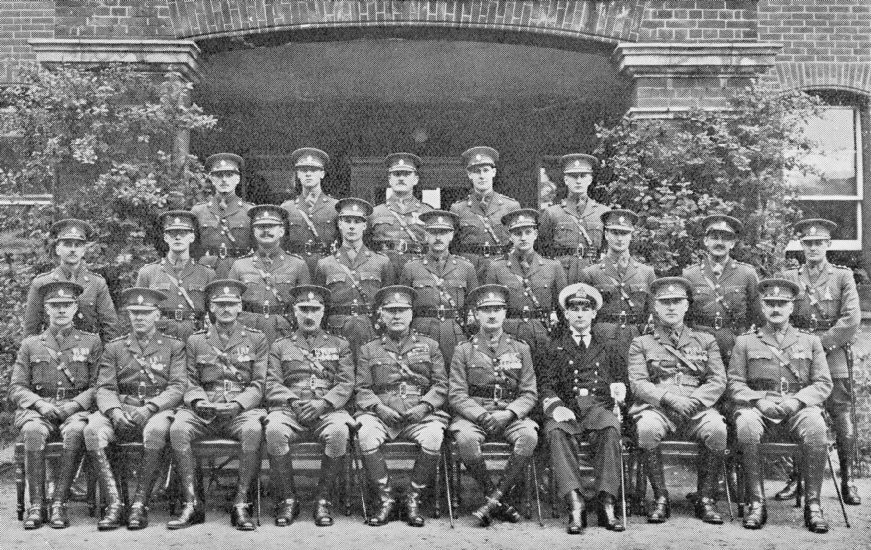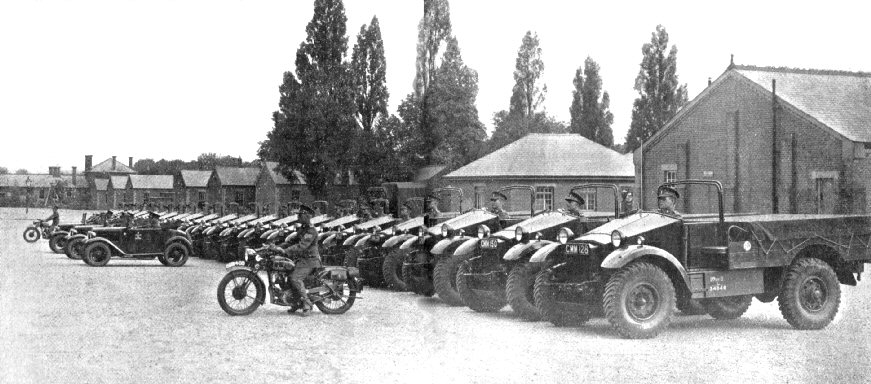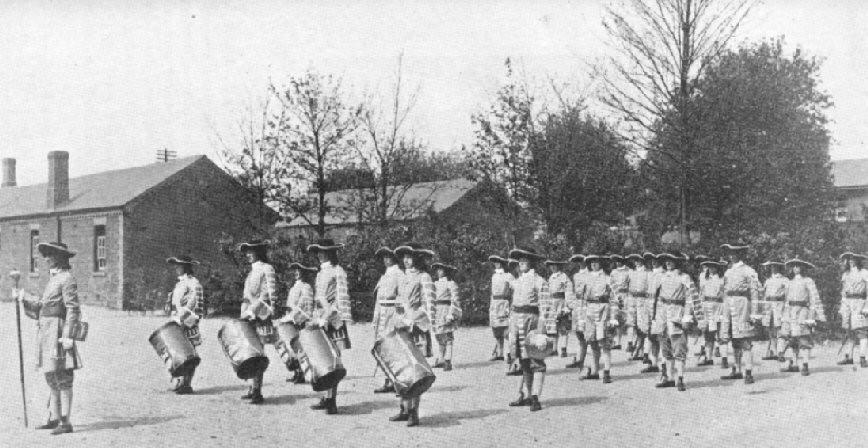1st Battalion Worcestershire Regiment (1935 to 1937)
THIS PAGE IS STILL UNDER CONSTRUCTION
In January, 1935, the Battalion left the less exacting life of Plymouth for the more intense conditions of Aldershot, where it entered the 2nd Division, then under the command of Major-General Wavell (later became Field-Marshal Viscount Wavell, G.C.B., G.C.S.I., G.C.I.E., M.C.) It was an era of experiment, for the power of new support weapons was beginning to be appreciated and mechanization was emerging from the suspicion which had hampered progress.

1st Battalion Worcestershire Regiment Officers (1936)
On the 1st January 1936 the Battalion received its first Morris 15-cwt. trucks and 30-cwt. lorries, while tactically the possibilities of that new element in co-operation, the Support Company, were being explored, the fourth rifle company being eventually sacrificed to allow for the new set-up. The carrier, too, made its appearance, originally as a vehicle for the .303 Vickers machine gun.

1st Battalion Worcestershire Regiment, Mechanical Transport Section received 18 new Morris Trucks from Chillwell (21st January 1936)
Training at Aldershot worked to a rigid cycle. The days in September had already been mapped out in January. The first two months of the year were devoted to individual training, March was allotted for sections and platoons, the company got together in April and May, and the Battalion trained in June. From June to August the Tattoo took precedence over all other considerations, though somehow Brigade Training also received attention.

Drums of the 1st Battalion Worcestershire Regiment in uniform worn at the Aldershot Tattoo (1936)
At Aldershot an average rather than a brilliant standard of sport was maintained, although there were some good athletes, Private Benton winning the Army Mile in 1936. But once again it was on the range that the Battalion won distinction and full teams went to Bisley in 1935 and 1936. In 1936 the Battalion won the London and Middlesex Rifle Association Meeting and at Bisley captured the Roupell Cup, Sergeant G. Jones winning a silver medal. But the full triumph came in 1937, when at the Aldershot Command Small Arms Meeting the Battalion won no less than ten events, with a wealth of competitors placed high up in other events. In that year Captain R. E. L. Tuckey won the Officers' (Individual) Challenge Cup and the "Best Shot of All Ranks" Challenge Cup. C.S.M. Shrimpton, who had been shooting consistently for many years, was second in the Warrant Officers' and Sergeants' Match, while the Battalion team won the Aldershot Command Match and Challenge Cup. (The Battalion team was Capt. R. E. L. Tuckey, Capt. J. O. Knight, Capt. P. O. C. Ray, Lieut. J. C. Home, C.S.M. Shrimpton, Sergt. Hanson, Sergt. G. Jones, Sergt. Wright, Cpl. Thacker, Cpl. Hobbs; L./Cpl. Wilson, L./Cpl. Bird, Pte. Bingham, Driver Wyatt.
Shooting for keen officers was not confined to the range. A syndicate shoot at Bordon was formed and there were good days after pheasant and woodcock and a few rabbits. Transport drivers acted as beaters on Wednesday afternoons in Alice Holt Wood, and on one occasion a roedeer was added to the bag.
The year 1937 was memorable as Coronation year. The Battalion was called upon to furnish a detachment of one officer and seven other ranks to march in the procession, a party of two officers and forty-three other ranks to line the streets, and a third party for less spec¬tacular and more exacting work in connection with the camp which was to hold the "Duty Troops" in Hyde Park. The patience of the members of "J" Group in Hyde Park was certainly tested to capacity ! Small boys pulled up the pegs which had been carefully plotted to lay out the camp. It is reported that one young optimist ap¬proached the Sergeant-Major for an autograph on his peg. There is no record of the answer. A civilian walking through the lines set a tent on fire with a lighted cigarette end, and pelting rain on consecutive days churned the ground round the cook-houses and dining tents to muddy soup.
The party to line the streets camped in Kensington Gardens near the Albert Memorial. Leaving camp at 10.30 a.m., they took up position on both sides of East Carriage Drive not far from Hyde Park Corner, where for two or three hours the humour of the dense London crowds, the occasional activities of the ambulance men and the Abbey service coming over the loud-speakers helped to pass away a weary wait. But the great proces¬sion itself, culminating in the splendour of the Royal Coach, was more than compensation for any physical demand of endurance.
From the Coronation the Battalion turned to sterner stuff and was engaged in the large manoeuvres held in Cambridgeshire, details of which never found their way into Regimental Magazine 'Firm'. It was the Coronation Tattoo at Aldershot which next occupied their concentrated attention: and indeed over many years the Aldershot Tattoo had come to be regarded as a public pilgrimage equal in status with the Royal Show, the British Industries Fair and other events of nation-wide significance.
The Battalion contribution to the great spectacle was to furnish a party of about 150 officers and other ranks to take part in a scene entitled "Lodging the Colour." This was exacting work which at one stage involved no less than thirty-five words of command to load and fire a musket ! It seems that the Pikemen and Musketeers of good King Charles's golden days were men of retentive memory. It was all good fun and the "Green Company" always drew a laugh from the spectators when such commands as "Blow off your loose corns" and "Have-a-care to cock your matches" sounded across the arena.
